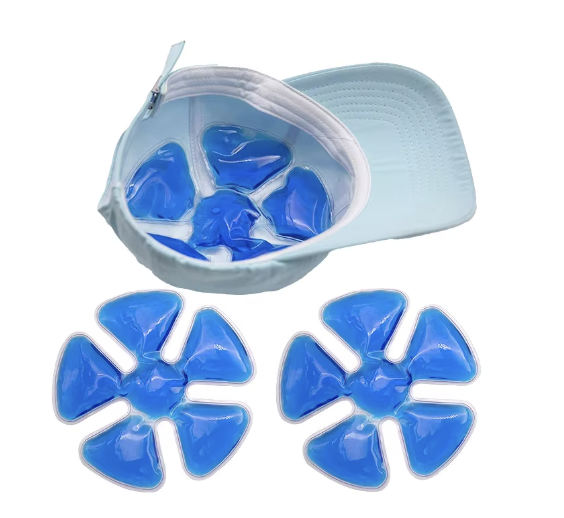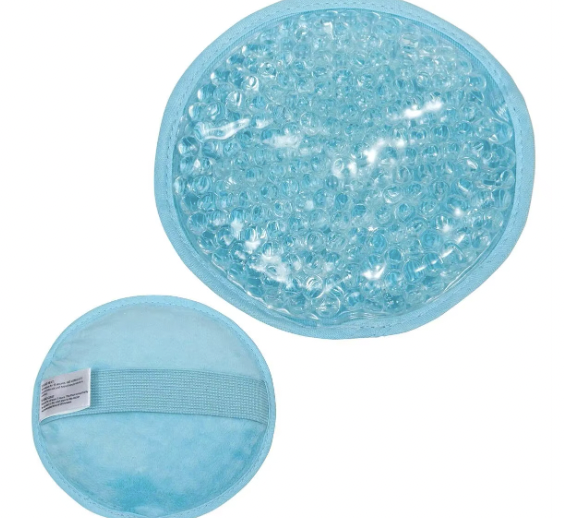Understanding the Science Behind Therapeutic Heat Therapy
Therapeutic heat has been a trusted remedy for muscle pain and stiffness for centuries. Modern innovations like microwave moist heat packs have made this healing technique more accessible than ever. These specialized packs combine the penetrating warmth of moist heat with the convenience of microwave heating, offering relief for various aches and pains. But to get the most benefit while staying safe, it's crucial to understand proper heating guidelines.
A microwave moist heat pack contains special materials that retain moisture and heat effectively. When heated correctly, these packs deliver consistent warmth that penetrates deep into tissues, promoting blood flow and helping muscles relax. The moisture component allows heat to transfer more effectively than dry heat alternatives, making them particularly effective for pain relief.
Essential Guidelines for Heating Your Moist Heat Pack
Initial Heating Instructions
For most standard microwave moist heat packs, begin with a 60-second heating interval at full power. This initial heating serves as a baseline to assess your pack's temperature response. Different microwaves have varying power levels, so it's important to start conservatively. After the first minute, carefully test the pack's temperature by touching it gently.
If additional warmth is needed, heat in 30-second increments until reaching the desired temperature. Never exceed 3 minutes total heating time, as this could damage the pack or create dangerous hot spots. Remember that the goal is therapeutic warmth, not intense heat that could cause burns.
Temperature Testing Methods
Before applying your microwave moist heat pack to your skin, perform a proper temperature test. Place the pack against the inside of your forearm, which is more sensitive than your hands. The temperature should feel comfortably warm but not hot enough to cause discomfort. If it's too hot to hold comfortably against your forearm for 5 seconds, allow it to cool before use.
Professional therapists recommend maintaining a temperature between 104-113°F (40-45°C) for optimal therapeutic benefits. While you may not have a thermometer to measure this precisely, the forearm test is a reliable way to ensure safe usage.
Maximizing Therapeutic Benefits Through Proper Timing
Duration of Application
The optimal duration for applying a microwave moist heat pack is typically 15-20 minutes per session. This timeframe allows enough heat penetration to achieve therapeutic benefits while preventing skin irritation or tissue damage. For chronic conditions, you might benefit from two to three sessions daily, spacing them at least 2 hours apart.
During application, pay attention to how your body responds. If you experience any discomfort or notice skin becoming overly red, remove the pack immediately. Each person's sensitivity to heat varies, so it's essential to find your personal comfort zone.
Maintaining Effective Heat Levels
Most microwave moist heat packs maintain therapeutic warmth for about 20-30 minutes after heating. If you need extended heat therapy, allow the pack to cool completely before reheating. This prevents potential damage to the pack and ensures even heat distribution. Some users find it helpful to have two packs, allowing them to alternate while maintaining consistent treatment.
To preserve the heat-retaining properties of your pack, avoid overheating or using excessive microwave times. Proper care extends the life of your pack and maintains its therapeutic effectiveness.

Safety Considerations and Best Practices
Preventing Common Mistakes
One of the most common errors when using a microwave moist heat pack is excessive heating time. This can lead to pack damage, reduced effectiveness, and potential skin burns. Always follow the manufacturer's specific instructions, as different materials and designs may require different heating times.
Another crucial safety practice is ensuring your pack isn't damaged or leaking. Inspect it before each use for signs of wear or moisture loss. If you notice any unusual spots, odors, or leakage, discontinue use and replace the pack to maintain safety and effectiveness.
Special Usage Considerations
Certain medical conditions require extra caution when using heat therapy. People with diabetes, circulation problems, or reduced skin sensitivity should consult their healthcare provider before using a microwave moist heat pack. Additionally, avoid applying heat to areas with acute inflammation, open wounds, or recent injury.
When using the pack on sensitive areas like the neck or joints, consider wrapping it in a thin towel for added protection. This extra layer helps regulate heat transfer and prevents direct skin contact while maintaining therapeutic benefits.
Frequently Asked Questions
Can I reheat my moist heat pack multiple times per day?
Yes, you can reheat your microwave moist heat pack multiple times daily, but allow it to cool completely between uses. Aim to space treatments at least 2 hours apart, and always check the temperature before each application.
Why does my heat pack sometimes feel too hot in certain spots?
Hot spots can occur due to uneven heating or microwave turntable issues. To prevent this, stop and shake the pack halfway through heating, and always heat in short intervals rather than one long session.
How do I know when it's time to replace my moist heat pack?
Replace your microwave moist heat pack if you notice signs of wear such as leakage, decreased heat retention, unusual odors, or visible damage to the outer material. Most quality packs last 6-12 months with regular use.
Should I add water to my moist heat pack?
No, you should not add water to your microwave moist heat pack unless specifically instructed by the manufacturer. These packs are designed with special moisture-retaining materials and adding water could damage them or create unsafe heating conditions.

